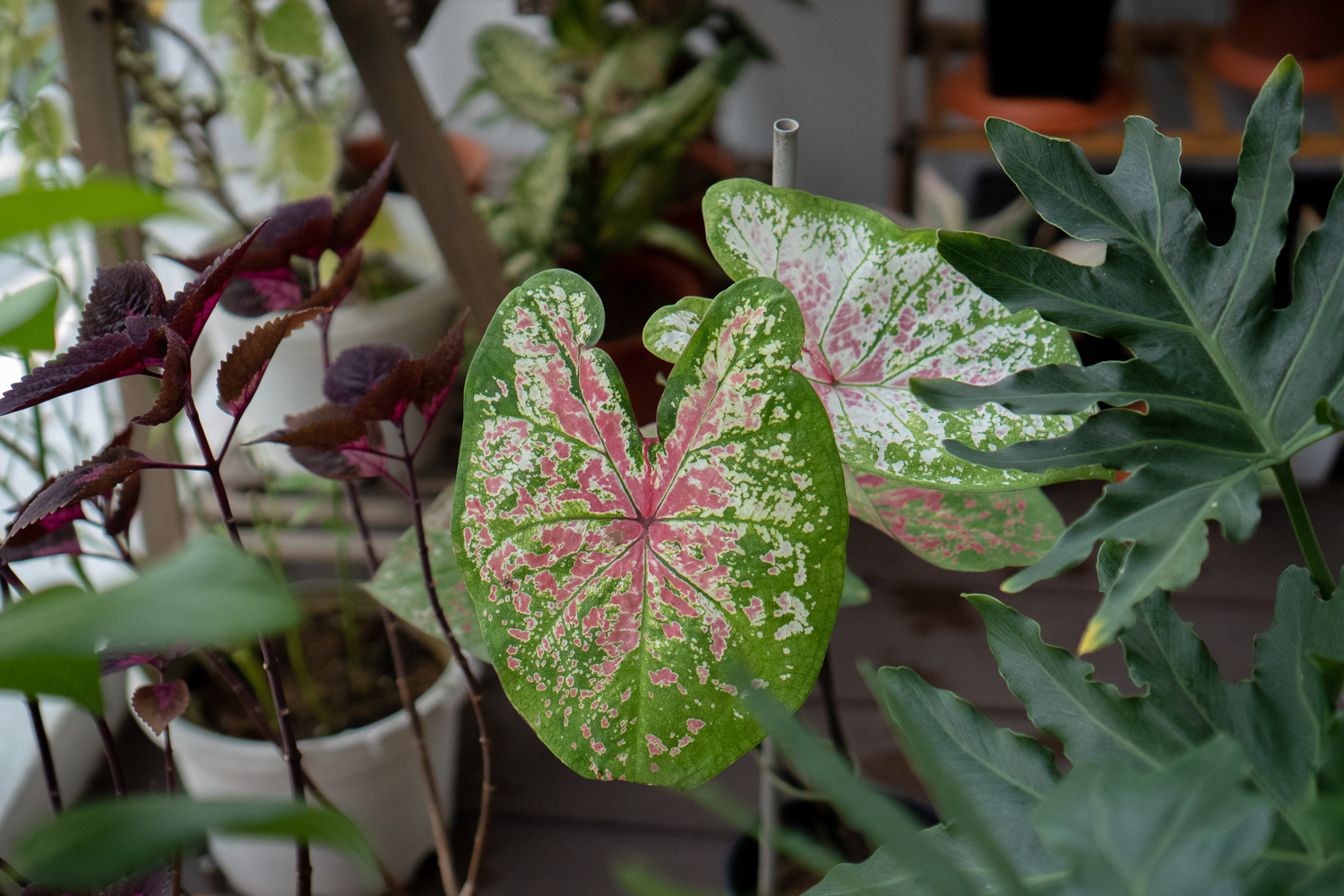If you’re just starting out your gardening journey; or hoping to embark on it – you might have seen one of these pretty infographics titled “Plants Even You Can’t Kill” circulating around social media.

There are certainly plants which are less ‘picky’ or plants that have a higher chance of survival in a certain climate or environment. But there are certainly no plants with a 100% survival rate whether you’re a beginner or someone who has done gardening for years.
It can be a little demoralising if you’re just getting into gardening and notice a plant you have “killed” in one of these lists. Using the infographic above as an example, here’s why I think these lists tend to be sweeping, overly-generalising and therefore largely inaccurate. (Feel free to disagree of course!)
1. Climate Factors
We live in a tropical country with temperatures ranging from 28 to 34 degree celsius. Singapore’s annual relative humidity averages at 83.9%, reaching 100% during prolonged periods of rain during the monsoon season.
Plants which thrive in dry or cool weather conditions therefore find it harder to acclimatise in hot and humid Singapore, and are susceptible to issues like root rot. Case in point: succulents and cacti.
Many of the plants listed above belong to the succulents and cacti family (e.g. Christmas Cactus, Zebra Haworthia, Aloe). Perhaps for countries with dry and hot weather conditions, these plants can easily grow using regular potting mix bought from the supermarket.
However, for hobbyists here in Singapore, we pay special attention to a number of factors to make up for our extremely humid weather.
For instance:
- Potting media. To prevent root rot, some believe in a 100% gritty non-organic media (i.e. no soil, peat moss, etc.). Some believe in mixing just a bit of peat moss to provide the plants with sufficient nutrients. Whilst others believe in a 50-50 mix of organics and non-organics (akadama, lava rocks, pumice, etc.). For us? Well, it depends on the type of succulent/cacti and how well it has acclimatised… 😂
- Ventilation. Ensuring the area is ventilated is also crucial; since the humidity in the air could also cause issues for the plant.
- Watering frequency. The Singapore weather is characterised by (a) extreme heat; and (b) extreme rain. We therefore adjust our watering schedule depending on how hot or how ‘rainy’ the week was; since this directly affects how quickly the potting media dries out.
For fellow gardeners out there living in non-tropical parts of the world, they would have similar concerns growing tropical plants.
2. Your environment
Prayer plants are tropical houseplants which prefer bright indirect light and high humidity. Sounds like it’ll thrive well in Singapore… right?
During the first 6 months of gardening, we bought 2 pots of prayer plants to put along our balcony. As our apartment gets the dreaded afternoon sun for most parts of the year, the leaves on both pots were starting to get burnt tips. After following the advice of a Calathea enthusiast whose prayer plants have been growing so beautifully, the plants grew well for another 5-6 months – then fell into the same burnt leaves problem again.

What we realised (especially after work-from-home was implemented due to the COVID-19 situation): not only do our plants get strong direct sunlight at that particular spot, it gets strong winds too which dries them out too much.
Learning point: it is good to understand the environmental conditions of the space you’re planning to put your plants in. A plant can struggle a lot if your environment is not suitable for it, even if it is a relatively ‘easy’ plant to care for.
Side note: we’ve decided to un-pot our prayer plants; strip the bulbs naked and re-grow them all over again. Fingers crossed. Will update if this works!
3. So where do I start then?
Exactly what Summer Rayne Oakes (we love her videos!) says in her video below. The most important thing would be to first understanding the plant that you’re hoping to purchase.
- What conditions does it thrive best in? (just ask the seller)
- Is your space/environment suitable for this plant?
- If not, are you willing and able to provide such conditions for the plant? (i.e. changing your potting media; adding a humidifier; investing in grow lights)
Placing your new plant at the most aesthetic corner of your apartment may be great for the gram, but may not be the best environment for it.
Okay that’s all for today! This post became way longer than expected. 😅 I might do another post on plants which are less ‘picky’ and thus more beginner-friendly.
Let’s Grow Together! 🌱
Jiamin

